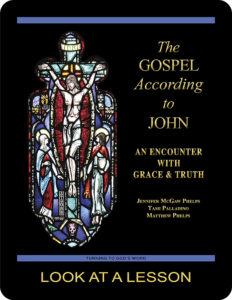lust
 The Gospel According to Matthew 5:28 (NABRE) contains a New Testament teaching on lust: “But I say to you that every one who looks at a woman lustfully has already committed adultery with her in his heart.” The adverb that here is translated as “with lust,” in Greek is the phrase πρὸς τὸ ἐπιθυμὴσαι αὐτὴν, which is exceedingly difficult to translate into English.
The Gospel According to Matthew 5:28 (NABRE) contains a New Testament teaching on lust: “But I say to you that every one who looks at a woman lustfully has already committed adultery with her in his heart.” The adverb that here is translated as “with lust,” in Greek is the phrase πρὸς τὸ ἐπιθυμὴσαι αὐτὴν, which is exceedingly difficult to translate into English.
The first word, πρὸς (pros), is a preposition indicating movement toward something. The second word, τὸ (to), is an article meaning “the.” The third word is an infinitive form of a verb meaning “to desire” that we’ll look at more closely below. The fourth word, αὐτὴν (auten), functions as a pronoun meaning “her.” Clearly, this phrase about lust in the Bible can’t render literally into English in a meaningful way as “toward to desire her.”
Adding still more complexity is the verb ἐπιθυμὴσαι (epithumesai). This verb contains the prefix ἐπί (epi) that means “on,” “upon,” or “against,” and the word θυμός (thumos) that can mean “soul,” “spirit,” “life,” “mind,” “desire,” or “the heart” in the sense of emotions. This verb, then, means something like fixing your very being upon something else, or being utterly consumed. While lust certainly could do that, the phrase in the original Greek implies a much broader and more interesting concept.
What this passage seems to be suggesting is that anyone fixating their whole desire and being on another person who is not his or her spouse is functionally committing adultery.
related topics: sexual immorality; sin
you also may like our study of the Gospel According to John
 The Gospel According to John: An Encounter with Grace & Truth, a 25-lesson Catholic Bible study with an imprimatur, examines the Fourth Gospel’s view of Jesus Christ as the Son of God, with special emphasis on the institution of the sacraments of the Church as the means by which Christians are purified and made holy. This recently revised study includes maps and additional commentary, and takes a closer look at the way in which Jesus relates to individual men and women. Click on the book’s cover to view a sample lesson.
The Gospel According to John: An Encounter with Grace & Truth, a 25-lesson Catholic Bible study with an imprimatur, examines the Fourth Gospel’s view of Jesus Christ as the Son of God, with special emphasis on the institution of the sacraments of the Church as the means by which Christians are purified and made holy. This recently revised study includes maps and additional commentary, and takes a closer look at the way in which Jesus relates to individual men and women. Click on the book’s cover to view a sample lesson.
 Click on the picture of the statue of Moses with horns (above) to learn more about Lost in Translation. A new entry is archived each Monday. Contact us to receive Lost in Translation by email every week. You may use any of the contact links on our website to ask Matthew a question.
Click on the picture of the statue of Moses with horns (above) to learn more about Lost in Translation. A new entry is archived each Monday. Contact us to receive Lost in Translation by email every week. You may use any of the contact links on our website to ask Matthew a question.
